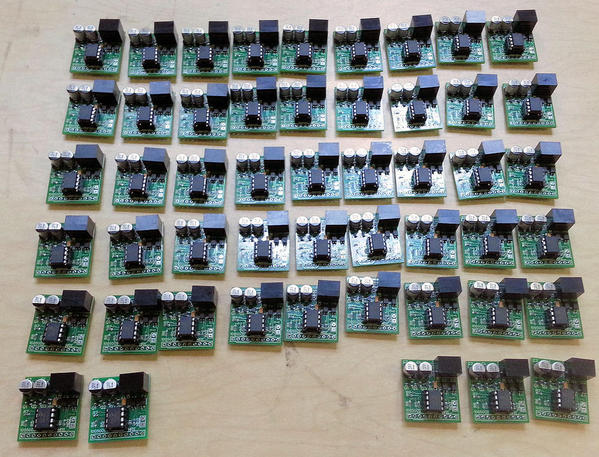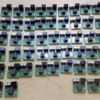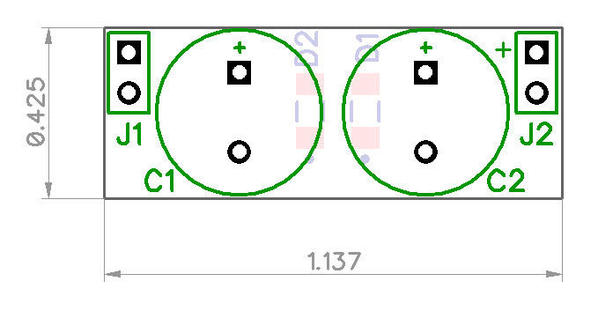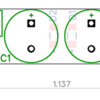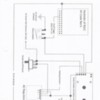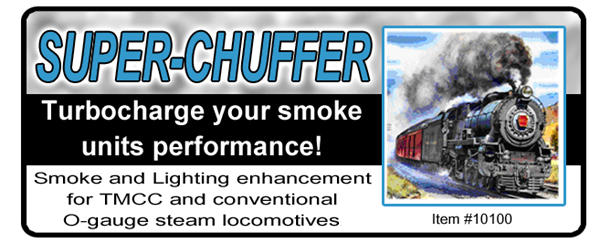
- Smoke Unit fan motor control for synchronized chuffing with the RailSounds output.
- Dynamic braking of smoke unit motor and chuff duration control enhances the appearance of the smoke chuff output at all speeds.
- Smoke fan motor runs continuously at slow speed when locomotive is stopped.
- Buffering of the chuff switch input to provide an isolated switch output for RailSounds chuff triggering.
- Rule 17 LED light control for headlight, dimming when locomotive is stopped.
- TMCC headlight voltage input to control headlight on/off state from remote.
- Automatic control to turn cab lights on when stopped, off when moving.
Demo Video Clip (This is John's earlier clip, we'll be posting a new one shortly)
For more product and ordering info simply go to: http://henningstrains.com/JWA.html
NOTICE: The Super-Chuffer board is now available (link is at top) and ready for shipping.
For a limited time it has an introductory price BUT, for all of our OGR friends we are ALSO offering an ADDITIONAL 10% discount by entering the promo code: OGRJWA during checkout.





